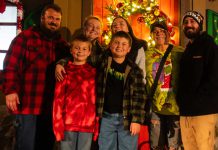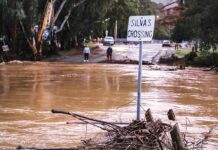Since the Sept. 11, 2001, attacks our country has become more
concerned with being prepared for disasters. The new Department of
Homeland Security has issued warnings and guidelines for people to
follow in this regard, but there are experts in this field much
closer than the bureaucrats in Washington, D.C.: members of The
Church of Jesus Christ of Latter-day Saints.
Since the Sept. 11, 2001, attacks our country has become more concerned with being prepared for disasters. The new Department of Homeland Security has issued warnings and guidelines for people to follow in this regard, but there are experts in this field much closer than the bureaucrats in Washington, D.C.: members of The Church of Jesus Christ of Latter-day Saints.
Mormons are experienced at preparing for the unexpected. For nearly a century church leaders have been telling them to store a year’s supply of food, water, clothing and other necessities. In addition, each family member should have a 72-hour emergency kit packed with food, clothing, water-purification tablets and first aid supplies which can be accessed and taken along if an evacuation becomes necessary.
Church members learned the importance of emergency preparedness in the 19th century when they suffered religious persecution and embarked on a 1,300-mile trip across the Great Plains and desert to safety in Utah.
This lesson was emphasized again during the Great Depression. In 1937 Church President Reuben Clark Jr. told Mormons to “Live within your means. Get out of debt. Lay by for a rainy day. Practice and increase your habits of thrift, industry, economy and frugality.” Ted Helvey, bishop of the LDS Morgan Hill First Ward, emphasizes that “emergencies include unexpected job loss or similar financial hardships.”
Many families have stored the recommended supplies, but it is not an easy thing to do. Stocks of water, sugar, canned foods, meats and dried beans take up up a lot of space, so people have to become creative, like using five-gallon cans of wheat for nightstands, storing cans under beds, storing plastic barrels of rice in the garage. And items with a short shelf-life have to be rotated regularly, using the oldest and replacing them with new purchases. The supplies are then available for whatever disaster strikes; in California this emergency is likely to be an earthquake.
Bishop Helvey gave local LDS members a chance last fall to test their preparedness. In church one Sunday morning he asked the congregation to imagine Morgan Hill had been isolated from other areas for 36-hours: stores and gas stations closed, no water or electricity. They were asked to try living on their stored supplies as much as possible.
Afterwards, participants shared their experiences and learned from one another, things like keeping car tanks full of gasoline, storing food that family members will really be willing to eat, having enough fresh batteries available.
In the past Gilroy and Morgan Hill LDS churches have hosted Emergency Preparedness Fairs for South County residents, displaying emergency kits, recommending quantities of food for various size families and highlighting food storage methods, as well as providing first aid information. Mormons believe in sharing with neighbors – it is part of the Church’s teachings, so if I learn of the event being repeated I will mention it in a future column.
The LDS Church makes available an excellent Web site on the internet which has a great amount of information on this topic – www.providentliving.org. The site contains specific advice about what staples to store, how to store them, home gardening, staying out of debt and maintaining physical health – all part of wise preparedness.














